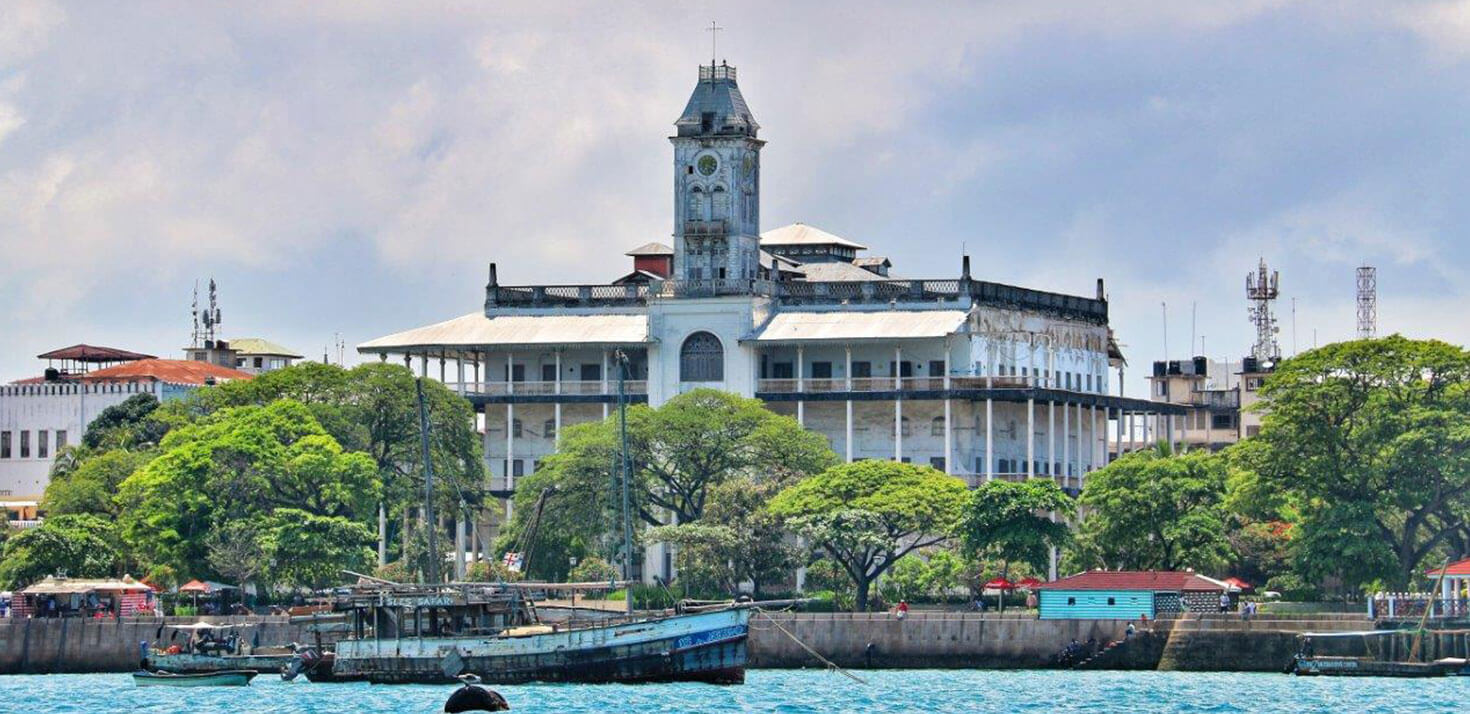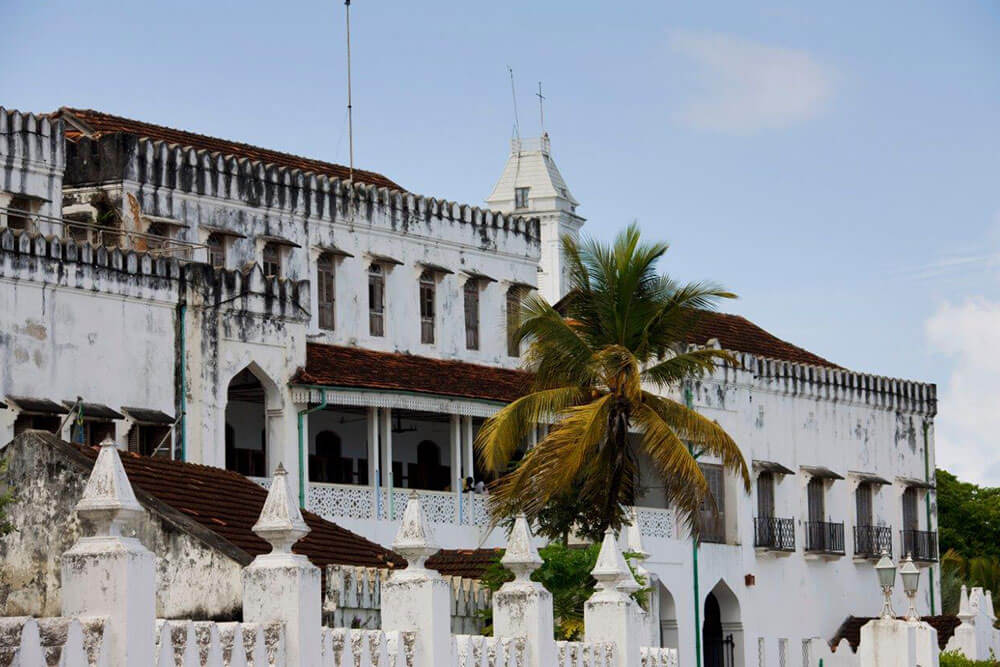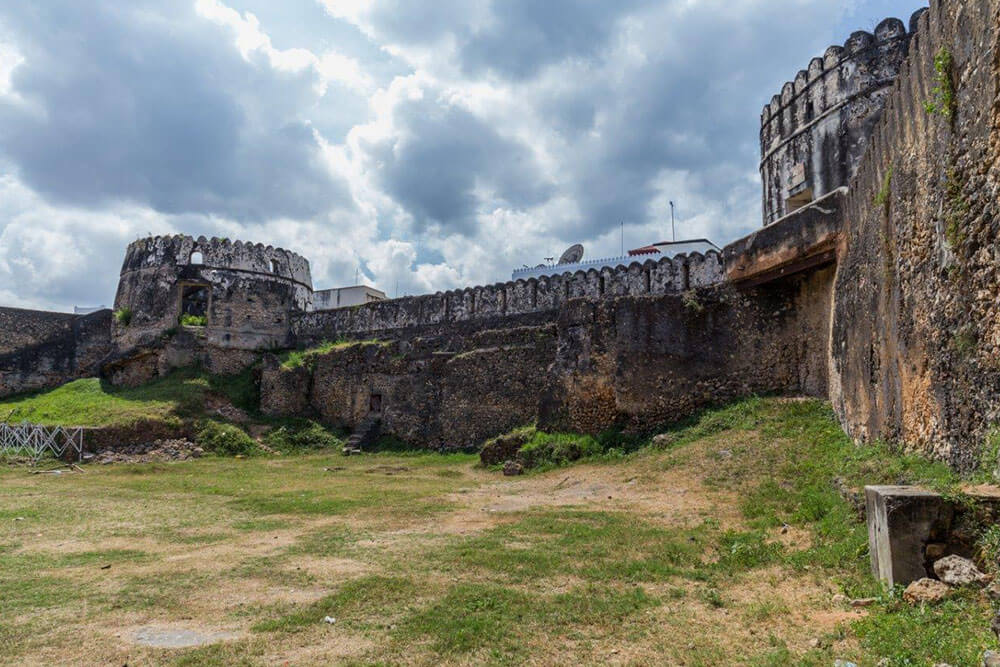
Explore Zanzibar's Historic Landmarks
March 2024
Zanzibar is a melting pot of different cultures over several centuries and nowhere is this more prominently seen than in the historic buildings of the old quarters.
The Sultan's Palace at the Stone Town seafront was, as the name suggests, built in 1883 for Sultan Said and remained the royal residence of later Omani rulers. Renamed the Peoples Palace Museum after the Zanzibar revolution of 1964, it was used as a government building before becoming a national museum. The interiors still retain a number of relics and memorabilia from the past, and well-tended palace gardens outside.
The Old Dispensary remains one of the most attractive sites in Zanzibar, with colonnades, carved balconies, a clock tower, and ornate lattice works in mint green paint. It was originally built in the late 1800s by a wealthy Indian merchant who acted as the personal advisor to the sultan. Inside the renovated structure, you can wander through three floors with connecting bridges set around an inner courtyard, a small museum and a fully functioning clinic.
Beyt-al-Ajaib, or House of Wonders, is a ceremonial palace built by 1883 by Barghash bin Said, the second Sultan of Zanzibar. Located at the seafront of Stone Town, and facing the attractive Forodhani Gardens, the house is currently closed for renovations. However, a tour of Stone Town inevitably passes by the impressive building, the first in Zanzibar to have electricity and an elevator.

The Hamamni Persian baths are also in Stone Town and were commissioned by Sultan Bhargash. They are no longer in use, but a short tour of these public baths gives insight into the lives of Zanzibar's 19th century nobility and the Middle Eastern influences on society of the time.
The Anglican Cathedral of Christ Church in Stone Town sits on the location of the largest slave market in Eastern Africa, the dark legacy of Zanzibar. Built in the 1870s, the basement of this fully functioning church still has the original slave chambers, and the altar supposedly marks the place where the whipping post stood. The East Africa Slave Trade Exhibit on the church grounds illustrates the context of slave and ivory trading from the hinterland to the coast and beyond, and the abolition campaign.

Also along the seafront is (Ngome Kongwe) originally built by the Portuguese in the 15th century and later reconstructed by Omani sultans. Nowadays, it hosts cultural events, including annual film and music festivals, in an open-air amphitheatre. Shops in the fort sell a range of local crafts and an art gallery is situated in one of the fort's towers. Open daily and free entrance.
Sayyida Salame (Princess Salme), daughter of Sultan Said, scandalised Zanzibari society in the mid-1800s by having a romantic liaison with a German merchant whom she later married. The Princess Salme house, an old Omani-style dwelling, is now part of the Emerson on Hurumzi which has a picturesque and popular rooftop restaurant. A tour of the house reveals much about a unique Zanzibari lady, and can be combined with lunch at the rooftop restaurant (advance booking required).
The Mtoni Palace, a short distance up the coast from Stone Town, is the birthplace of Princess Salme. Now a roofless ruin, the large hallways, arched walls, and remnants of Persian baths tell of a once grand and vibrant structure, as captured in Salme’s autobiography, Memoirs of an Arabian Princess.
Note: All of these historic excursions are may be booked with our friendly Guest Relations teams at The Zanzibar Collection.
 +254 733 777 172
+254 733 777 172





 Book Now
Book Now